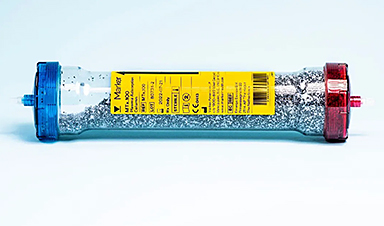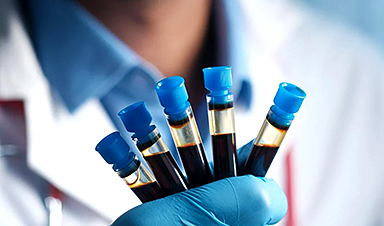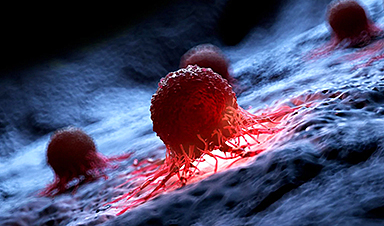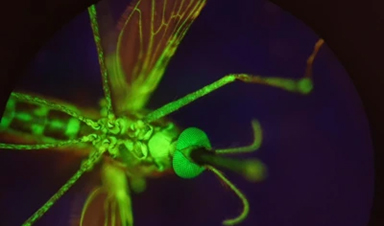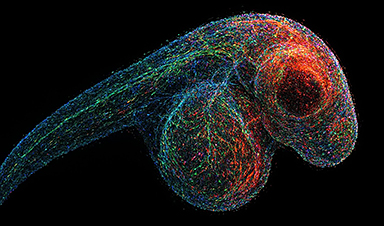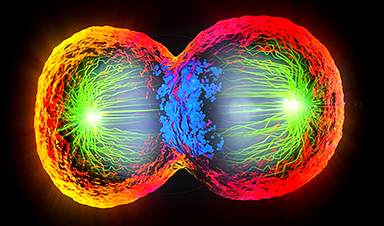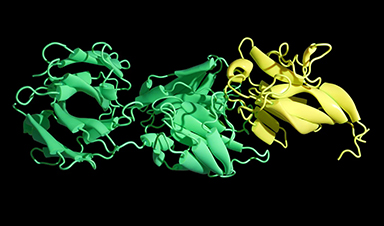A pioneering study has unveiled the Au-HN-1 nanosystem, a cutting-edge approach that promises to transform the diagnosis and treatment of tongue squamous cell carcinoma (TSCC). By harnessing gold nanoparticles coupled with the HN-1 peptide, this innovative system targets TSCC cells with unprecedented precision, offering enhanced photothermal therapy (PTT) and dual-mode imaging capabilities. With the ability to localize photosensitizers at tumor sites, the system boosts the effectiveness of tumor ablation, while its fluorescence and computed tomography (CT) imaging functions ensure accurate tumor detection and surgical margin identification. This breakthrough technology holds the potential to significantly improve treatment outcomes and the quality of life for patients battling TSCC.
Tongue squamous cell carcinoma (TSCC) is an aggressive cancer that is notoriously difficult to treat, with a high rate of metastasis and recurrence. Conventional therapies such as surgery, chemotherapy, and radiotherapy often lack the necessary specificity, resulting in debilitating side effects and diminished quality of life. Furthermore, accurately defining tumor margins during surgery remains a challenge, which can lead to incomplete resections and higher recurrence rates. With a grim prognosis and high mortality, TSCC underscores the urgent need for more effective, targeted therapies that can improve survival rates while minimizing collateral damage to healthy tissues.
Published (DOI: 10.1038/s41368-024-00343-7) on January 14, 2025, in the International Journal of Oral Science, researchers from Jilin University introduced the Au-HN-1 nanosystem, an innovative development designed for the dual purpose of targeting and treating TSCC. The study demonstrates how gold nanoparticles, modified with the HN-1 peptide, enable precise targeting of cancer cells, offering hope for more effective treatments for this deadly disease.
The Au-HN-1 nanosystem represents a quantum leap in the treatment and diagnosis of TSCC. By linking gold nanodots with the HN-1 peptide, the research team achieved highly selective targeting of TSCC cells, significantly improving the accumulation of photosensitizers at tumor sites. This targeted approach enhanced the efficacy of photothermal therapy (PTT) in mouse models, reducing tumor volumes without causing systemic toxicity. The nanosystem’s dual-mode imaging (fluorescence and CT) also allowed for accurate tumor localization and delineation of surgical margins—an essential factor in improving surgical outcomes. With its stability, biocompatibility, and minimal side effects, the Au-HN-1 system shows promising potential for long-term in vivo imaging and personalized cancer therapy. By combining diagnostic and therapeutic functions into a single, versatile system, this breakthrough minimizes damage to healthy tissues, marking a significant advance in cancer nanotechnology.
Dr. Guoqing Wang, the lead researcher of the study, emphasized the importance of this breakthrough: “The Au-HN-1 nanosystem is a major step forward in TSCC treatment, as it integrates targeted therapy with dual-mode imaging. This combination enhances therapeutic precision while safeguarding healthy tissue, pushing the boundaries of what’s possible in cancer nanotherapy.”
The Au-HN-1 nanosystem could transform the landscape of TSCC treatment and beyond. Its ability to improve photothermal therapy through targeted delivery of photosensitizers, coupled with real-time imaging, allows for precise tumor ablation and clearer tumor margin identification. This technology has the potential to revolutionize surgical procedures, reducing recurrence rates and improving patient outcomes. Furthermore, the versatility of the nanosystem suggests that it may be applicable to other head and neck cancers, offering hope for more effective and minimally invasive treatments. As ongoing research refines this system, it may pave the way for more personalized and precise cancer therapies, ultimately enhancing the lives of patients with TSCC and related malignancies.
Hao, M., et al. (2025). Tongue squamous cell carcinoma-targeting Au-HN-1 nanosystem for CT imaging and photothermal therapy. International Journal of Oral Science. doi.org/10.1038/s41368-024-00343-7.
News
AI Outperforms Physicians in Real-World Urgent Care Decisions, Study Finds
The study, conducted at the virtual urgent care clinic Cedars-Sinai Connect in LA, compared recommendations given in about 500 visits of adult patients with relatively common symptoms – respiratory, urinary, eye, vaginal and dental. [...]
Challenging the Big Bang: A Multi-Singularity Origin for the Universe
In a study published in the journal Classical and Quantum Gravity, Dr. Richard Lieu, a physics professor at The University of Alabama in Huntsville (UAH), which is a part of The University of Alabama System, suggests that [...]
New drug restores vision by regenerating retinal nerves
Vision is one of the most crucial human senses, yet over 300 million people worldwide are at risk of vision loss due to various retinal diseases. While recent advancements in retinal disease treatments have [...]
Shingles vaccine cuts dementia risk by 20%, new study shows
A shingles shot may do more than prevent rash — it could help shield the aging brain from dementia, according to a landmark study using real-world data from the UK. A routine vaccine could [...]
AI Predicts Sudden Cardiac Arrest Days Before It Strikes
AI can now predict deadly heart arrhythmias up to two weeks in advance, potentially transforming cardiac care. Artificial intelligence could play a key role in preventing many cases of sudden cardiac death, according to [...]
NanoApps Medical is a Top 20 Feedspot Nanotech Blog
There is an ocean of Nanotechnology news published every day. Feedspot saves us a lot of time and we recommend it. We have been using it since 2018. Feedspot is a freemium online RSS [...]
This Startup Says It Can Clean Your Blood of Microplastics
This is a non-exhaustive list of places microplastics have been found: Mount Everest, the Mariana Trench, Antarctic snow, clouds, plankton, turtles, whales, cattle, birds, tap water, beer, salt, human placentas, semen, breast milk, feces, testicles, [...]
New Blood Test Detects Alzheimer’s and Tracks Its Progression With 92% Accuracy
The new test could help identify which patients are most likely to benefit from new Alzheimer’s drugs. A newly developed blood test for Alzheimer’s disease not only helps confirm the presence of the condition but also [...]
The CDC buried a measles forecast that stressed the need for vaccinations
This story was originally published on ProPublica, a nonprofit newsroom that investigates abuses of power. Sign up to receive our biggest stories as soon as they’re published. ProPublica — Leaders at the Centers for Disease Control and Prevention [...]
Light-Driven Plasmonic Microrobots for Nanoparticle Manipulation
A recent study published in Nature Communications presents a new microrobotic platform designed to improve the precision and versatility of nanoparticle manipulation using light. Led by Jin Qin and colleagues, the research addresses limitations in traditional [...]
Cancer’s “Master Switch” Blocked for Good in Landmark Study
Researchers discovered peptides that permanently block a key cancer protein once thought untreatable, using a new screening method to test their effectiveness inside cells. For the first time, scientists have identified promising drug candidates [...]
AI self-cloning claims: A new frontier or a looming threat?
Chinese scientists claim that some AI models can replicate themselves and protect against shutdown. Has artificial intelligence crossed the so-called red line? Chinese researchers have published two reports on arXiv claiming that some artificial [...]
New Drug Turns Human Blood Into Mosquito-Killing Weapon
Nitisinone, a drug for rare diseases, kills mosquitoes when present in human blood and may become a new tool to fight malaria, offering longer-lasting, environmentally safer effects than ivermectin. Controlling mosquito populations is a [...]
DNA Microscopy Creates 3D Maps of Life From the Inside Out
What if you could take a picture of every gene inside a living organism—not with light, but with DNA itself? Scientists at the University of Chicago have pioneered a revolutionary imaging technique called volumetric DNA microscopy. It builds [...]
Scientists Just Captured the Stunning Process That Shapes Chromosomes
Scientists at EMBL have captured how human chromosomes fold into their signature rod shape during cell division, using a groundbreaking method called LoopTrace. By observing overlapping DNA loops forming in high resolution, they revealed that large [...]
Bird Flu Virus Is Mutating Fast – Scientists Say Our Vaccines May Not Be Enough
H5N1 influenza is evolving rapidly, weakening the effectiveness of existing antibodies and increasing its potential threat to humans. Scientists at UNC Charlotte and MIT used high-performance computational modeling to analyze thousands of viral protein-antibody interactions, revealing [...]







